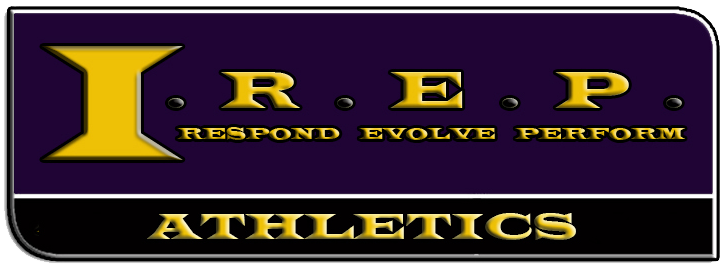Yoga
Regular practice of yoga gently stretches the muscles and tendons, leading to a greater range of motion. For a triathlete, flexibility may translate to more efficient swim strokes, greater comfort and power while cycling, and an elongated running stride. All these slight improvements can cumulatively shave precious seconds or even minutes off your race time.
The nature of triathlon training with repetitive motions can lead to tightness, particularly in the hamstrings, hip flexors, and shoulders. By incorporating yoga poses that target these areas, athletes can alleviate tightness, which significantly reduces the likelihood of injury.
 Many yoga poses require maintaining equilibrium, which stimulates the small stabilizing muscles throughout the body. These muscles are vital for biking over uneven surfaces and for maintaining form and efficiency in running, especially when fatigued during the later stages of a race.
Many yoga poses require maintaining equilibrium, which stimulates the small stabilizing muscles throughout the body. These muscles are vital for biking over uneven surfaces and for maintaining form and efficiency in running, especially when fatigued during the later stages of a race.
In the aftermath of intense workouts, a gentle yoga session can serve as an active recovery by increasing blood flow to tired muscles, helping to accelerate the healing process and alleviate muscle soreness.
The focus on mindful breathing and meditation can be beneficial for triathletes, who often face mental and physical barriers, especially during longer endurance events. The calmness fostered through yoga can translate to better stress management, sharper focus, and greater mental endurance on race day.
Vinyasa or Ashtanga yoga practices are highly dynamic and can serve as a cardiovascular workout in addition to promoting flexibility and strength. Yin yoga or restorative yoga sessions are slower and focus more on deep stretching and relaxation, making them ideal for recovery days.
A restorative yoga session could be ideal on a rest day or after a high-intensity workout, whereas a more active yoga session might fit better on a moderate training day.
Indoor Wall Climbing
Enhanced grip strength garnered from climbing activities fortifies a triathlete’s hold during swimming, allowing for a more secure grasp on the water through each stroke. On the bike, a firmer grip facilitates better control, especially when maneuvering through challenging courses or conditions.
Climbing demands intricate use of the fingers, hands, and forearms, which leads to a significant improvement in muscular endurance in these areas. This endurance is highly beneficial because it delays the onset of fatigue, allowing triathletes to maintain optimal performance over extended periods.
To successfully scale a climbing wall, climbers must consistently stabilize their bodies against gravity, relying on their core strength for balance and control. This constant tension on the core muscles replicates the stabilization needed in triathlon racing.
Incorporating indoor wall climbing into a training regime offers strategic advantages. It develops fine motor skills, improves spatial awareness, and requires athletes to develop problem-solving strategies as they determine the most efficient route up the wall. These cognitive skills enhance a triathlete’s ability to make quick, effective decisions during a race.
As an exercise predominantly demanding pulling motions, climbing provides a natural counterbalance to the pushing actions found in swimming, cycling, and running. This counteracting force helps in the prevention of muscular imbalances that triathletes are often prone to, contributing to overall muscular harmony and reducing the risk of injury.
When folding indoor wall climbing into a triathlete’s schedule, careful consideration must be given to timing and frequency. It must complement the primary training, rather than overstress the athlete. Placing climbing sessions during the early or middle parts of the training week can be utilized as a form of cross-training to enhance strength without jeopardizing important race-specific workouts.
Starting at a lower intensity and gradually increasing, as proficiency and fitness levels improve, can help ensure a beneficial integration into their broader training agenda.
Martial Arts
Engaging in martial arts training that emphasizes speed helps the nervous system to respond more quickly, thus enabling faster muscle contractions and reactions. This improved response time is invaluable during the high-intensity portions of a triathlon. Martial arts practice teaches the body to remain balanced and poised while moving swiftly and changing directions, enhancing a triathlete’s nimbleness.
Martial arts demand a high level of mind-body connection, teaching practitioners to execute complex techniques with precision. This heightened sense of coordination is instrumental for triathletes. Swimming requires the arms, legs, and torso to work in harmony to create a fluid motion through the water. Cycling and running also benefit from enhanced coordination, leading to more efficient and economical race efforts.
 Because martial arts encompass a wide range of movement patterns, they foster overall better bodily awareness. This awareness, or proprioception, is critical during triathlon training and competition, helping athletes maintain proper form and alignment to avoid injury and conserve energy.
Because martial arts encompass a wide range of movement patterns, they foster overall better bodily awareness. This awareness, or proprioception, is critical during triathlon training and competition, helping athletes maintain proper form and alignment to avoid injury and conserve energy.
The mental discipline, concentration, and situational awareness cultivated in these disciplines are directly translatable to triathlon racing, where mental toughness can be as critical as physical strength.
Martial arts can teach pain management and stress coping techniques, providing strategies for triathletes to endure discomfort and carry on, particularly towards the final stages of a grueling race. The mental fortitude gained from consistently training in martial arts supports athletes in pushing through periods of high exertion when fatigue begins to set in.
Choosing a martial art that complements athletic training without excessive risk of injury is key. Disciplines such as judo or taekwondo, which emphasize flexibility, speed, and agility, may offer the most transferable benefits.
Sessions can be placed on lighter training days or during the off-season to fine-tune other areas of fitness without overloading the athlete’s schedule.
Hiking
The act of hiking over extended periods, particularly on inclines, strengthens the same muscle groups used in running and cycling. The glutes, quadriceps, hamstrings, and calves all receive a thorough workout during a challenging hike. The varied and often unpredictable nature of trails requires the muscles to adapt quickly to changes, which can improve muscle fiber recruitment and overall leg strength. This translates into increased stamina and resilience that can benefit triathletes during long-distance events.
The cardiovascular system gains from the extended, moderate exertion required for hiking. Sustained aerobic activity improves heart health and increases lung capacity. These adaptations are beneficial for endurance sports like triathlon, where cardiovascular efficiency is paramount.
It is less stressful on the joints compared to the repetitive impact of running, providing a way to actively recover without halting the conditioning process. This makes hiking an ideal choice for active recovery days, allowing muscles to repair and build without excessive strain.
From a psychological standpoint, the calm and serenity of natural environments can offer a refreshing change from the rigorous and structured nature of triathlon training. Nature’s influence on the mind is substantial, promoting mental clarity and reducing stress levels. Hiking can serve as a mental reset, offering triathletes the space to disengage from the pressures of continuous training and competition.
The meditative pace of hiking allows time for reflection, which can be used to set goals, strategize, or simply clear the mind of clutter. This mental downtime can reinvigorate an athlete’s focus and enhance their mental sharpness, which is necessary when facing the mental challenges of a triathlon.
Traversing uneven hiking trails demands balance and coordination, which in turn can benefit a triathlete’s performance. Navigating over rocks, roots, and varying terrain enhances proprioceptive abilities—our perception of body position and movement. This kind of terrain requires a greater degree of ankle stability and foot-eye coordination, potentially leading to fewer missteps or falls during running segments on the course.
Hiking is best integrated on days when the body can benefit from lower-intensity, endurance-based activity—ideally after intense triathlon-specific workouts or during tapering periods. By switching out an easy run or a longer, recovery-paced bike ride with a hike, athletes can preserve their endurance without incurring the excessive impact associated with more rigorous training.
Functional Training
Functional training focuses on engaging multiple muscle groups simultaneously, reflecting the complex, integrated movements found in a triathlon. By working on these compound movements, triathletes can improve their efficiency across all three disciplines. Exercises like rotational medicine ball throws can enhance the core rotational power that is transferable to the torso’s twist during swimming. Single-leg squats can directly correlate to the power output during cycling and promote unilateral leg strength critical for running.
Most physical activities require movement in various planes. Functional training often encompasses exercises that necessitate moving side-to-side, back-and-forth, and in rotational patterns. Incorporating multi-planar exercises conditions the body to better handle the dynamic requirements of triathlon events and increases resilience against potential injury from unexpected movements.
Incorporating functional training into a triathlete’s regimen can also help in preventing injuries by creating a more balanced physique. Triathlon training can sometimes lead to muscle imbalances, as certain muscle groups become dominant while others are underutilized. Functional training helps to equilibrate these imbalances by equally engaging all muscle groups required for a particular movement pattern. This can reduce the risk of overuse injuries that often plague endurance athletes and can contribute to a stronger, more balanced body.
Another benefit of functional training is its ability to improve proprioception—the body’s ability to sense movement, action, and location. This heightened body awareness can lead to better coordination and an increased ability to correct one’s posture and alignment during the three stages of the triathlon. Enhanced neuromuscular coordination means more efficient movements, which can translate to conserving energy and preventing fatigue during training and racing.
To incorporate functional training into a triathlete’s routine, it is important to select exercises that reflect the specific needs of the athlete and address the demands of the sport. A triathlete might include a variety of plyometric exercises to boost explosive power or balance-focused movements to aid in bike handling and running gait.
Such exercises are best performed as part of strength and conditioning sessions, separate from the main swim, bike, or run workouts. This allows the athlete to focus on form and quality of movement, without the fatigue associated with endurance workouts.
